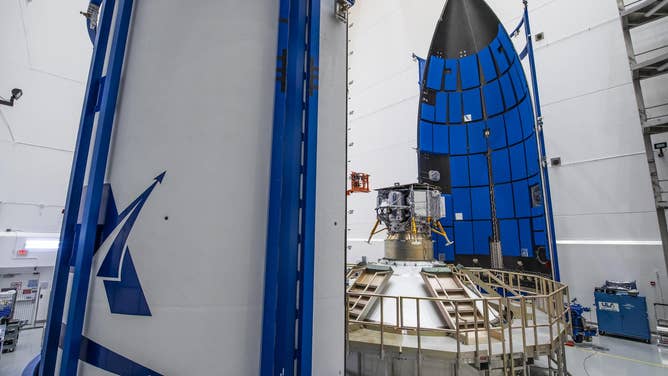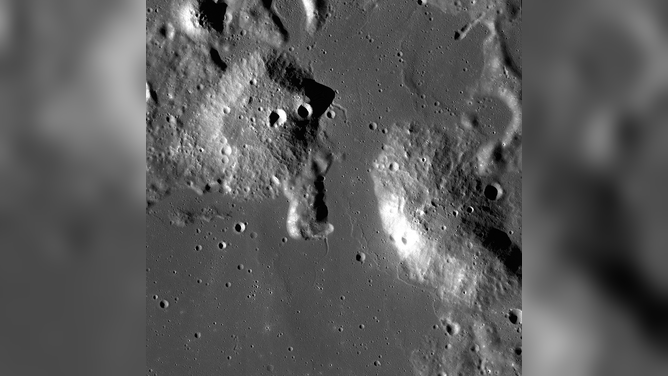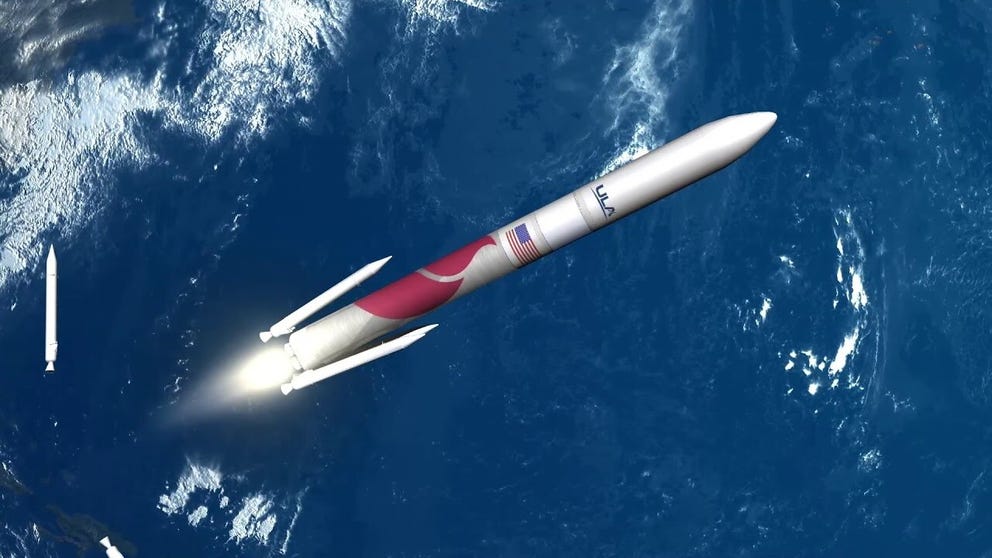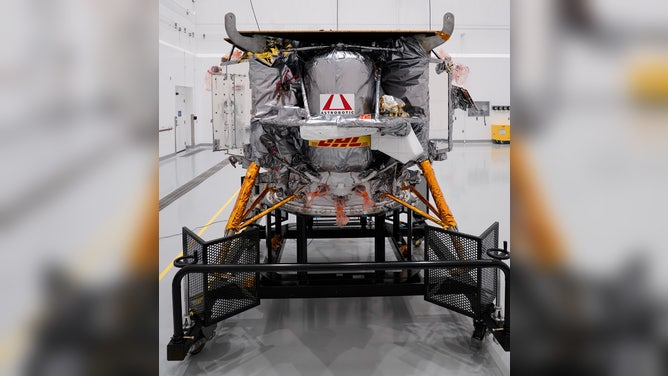First Vulcan rocket launch with commercial Moon lander set for Monday morning
Liftoff is scheduled for 2:18 a.m. ET Monday during a 45-minute launch window on ULA's Vulcan rocket from Cape Canaveral. The mission marks the first for Astrobotic, ULA's Vulcan rocket and NASA's Commercial Lunar Payload Services program.
United Launch Alliance Vulcan Centaur rocket preview
The United Launch Alliance is preparing to launch the new Vulcan Centaur rocket from Cape Canaveral, Florida.
CAPE CANAVERAL, Fla. – NASA is heading back to the Moon this Monday, but this time, the agency is flying commercial with Astrobotic, a Pittsburgh-based company aiming to become the first private business to land on the Moon.
Five NASA-sponsored lunar science payloads are set to launch at 2:18 a.m. ET with the Astrobotic Peregrine Moon lander on the Vulcan rocket from Cape Canaveral, Florida.
There are a lot of firsts for this lunar mission, beginning with the launch itself. The robotic mission is launching on United Launch Alliance's Vulcan rocket as the first mission for the new rocket. While much of the rocket hardware is based on ULA's workhorse rocket, the Atlas V, it has new engines developed by Blue Origin.
With a new rocket, it's possible the launch could be delayed again. The liftoff was initially scheduled for early last year and has been delayed multiple times to allow for more testing.
On Friday, ULA rolled out Vulcan to Launch Complex 41 ahead of the planned liftoff. The company said everything continues to progress toward the first flight test and certification mission known as Cert-1.
HUMAN ASHES, PET HAIR AMONG ITEMS HEADED TO MOON ON MONDAY LAUNCH
The launch forecast is 85% favorable with the primary concern being thick cloud cover around the launch site, according to the Space Force's 45th Weather Squadron.

2024 ROCKET LAUNCH SCHEDULE SHOWS CONTINUED STEADY PACE OF BLAST-OFFS
In another first for the U.S. space agency, this isn't a NASA-controlled lander going to the Moon; it's a commercially built and operated robotic mission benefiting from NASA-funded technological developments and contracts.
"It's going to be a wild, wild ride. I'm really looking forward to finally getting to space and taking our shot at the Moon here," Astrobotic CEO John Thornton recently told reporters. "This is going to be the first of many."
Astrobotic was among the 14 private companies selected by NASA under the agency’s Commercial Lunar Payload Services (CLPS) program to deliver science to the Moon ahead of the first Artemis astronaut missions to the lunar south pole in late 2025. In February, another NASA CLPS contractor, Houston-based company Intuitive Machines, will launch its Nova-C lander with SpaceX.
The Peregrine lander carries 20 payloads to the lunar surface, including five NASA science missions that will study lunar volatiles, radiation and navigation on the Moon.
Navajo Nation asks NASA, DOT to delay Moon launch
Because this is not a NASA spacecraft, there are also dozens of other small items launching to the Moon, including cremated human remains for memorial spaceflight companies Celestis and Elysium Space.

The Peregrine Moon lander inside ULA's Vulcan rocket fairings. (Image: NASA/ULA)
(NASA)
Arizona Public Radio first reported on Dec. 28 that Navajo Nation President Buu Nygren has asked NASA and the U.S. Department of Transportation to delay the launch because the Moon is part of the Navajo's spiritual heritage, and depositing human remains is "tantamount to desecration of this sacred space."
NASA Deputy Associate Administration for Exploration Joel Kearns said NASA received the letter from the Navajo Nation, and an intergovernmental team is looking into Nygren's request.
LATE 'STAR TREK' ACTRESS NICHELLE NICHOLS TO GRACE ONE FINAL VOYAGE INTO THE COSMOS
"We take concerns as expressed from the Navajo Nation very, very seriously," Kearns said. "And we think we're going to be continuing on this conversation."
When asked on a call with reporters if NASA knows all the payloads heading with its science to the Moon, NASA CLPS Program Manager Chris Culbert said the agency has "reasonably good awareness about what payloads are on these commercial missions."
"We don't have the framework for telling them what they can and can't fly," Culbert said.
Other items launching on Peregrine include half a dozen small Moon rovers, a time capsule shaped like a Japanese sports drink and a token from Pittsburgh amusement park Kennywood.
NASA buys down risk with more commercial launches
NASA is betting on some of the CLPS missions to be successful but knows there will be failures. Only four countries have successfully landed on the Moon, including the U.S., and no private company has yet to do so.
Just over half of all lunar landings have been successful.

This is an image of the Gruithuisen Domes, taken by the Lunar Reconnaissance Orbiter. Image Credit: NASA/GSFC/Arizona State University
(NASA)
"Each landing attempt is like taking shots on goal; the more shots, the more opportunities you get the score," Culbert said, quoting Thomas Zurbuchen, the former head of NASA's Science Mission Directorate. "Today, we don't know how many of these early tests will be successful, but I can tell you that these American companies are technically rigorous, they're very business savvy, they're resourceful and driven."
The space agency has also doubled down on some science heading to the Moon in the coming years. Four of the five NASA payloads flying on Peregrine will also fly on NASA's VIPER rover mission to the Moon later this year or on other CLPS missions.
If all goes well, Peregrine will make a soft landing on Feb. 23 near the lunar volcanic region known as the Gruithuisen Domes.






